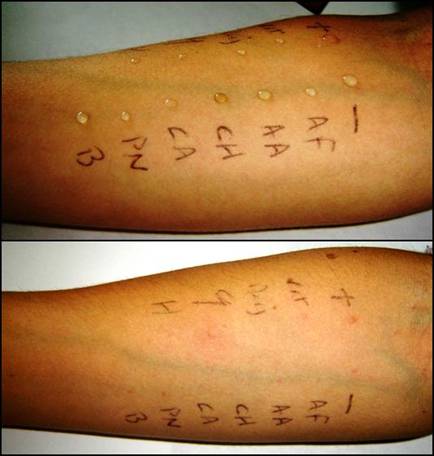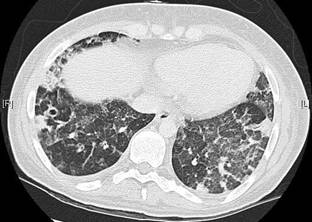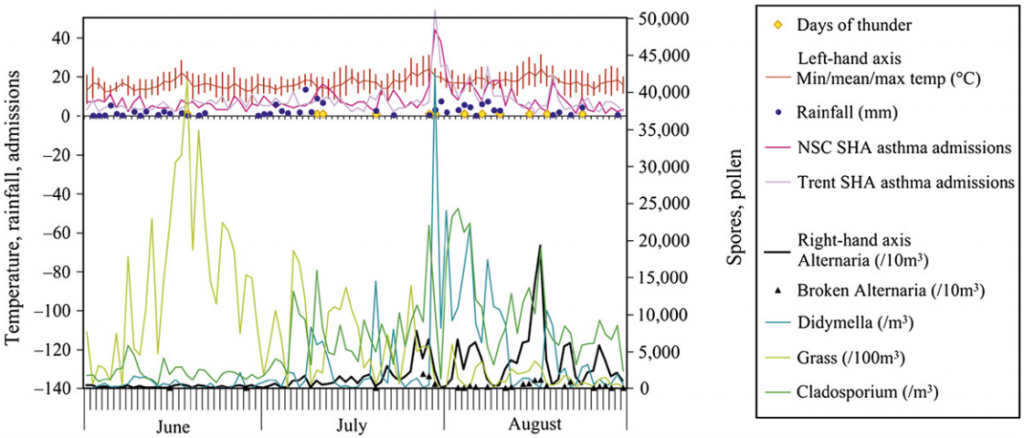Fungal spores are a common trigger for asthma, and the fungal burden within the lungs can be significant. There is increasing evidence that treatment with antifungals may be beneficial for patients with severe asthma who are sensitised to fungi.

Videos

Factsheets
SAFS
| NAMES SAFS, severe asthma with fungal sensitisation |
| DISEASE Severe asthma as defined by the 2009 ATS/ERS guidelines or earlier BTS guidelines. In practice this means a low FEV1 or peak flow (usually persistently), high dose inhaled steroids and/or frequent courses of oral steroids. Watch a patient experience video about sensitivity to Alternaria |
| FUNGI Many, some alone, some collectively. Especially Aspergillus fumigatus, Penicillium chrysogenum, Cladosporium herbarum, Alternaria alternata, Candida albicans, Trichophyton spp. and probably others. |
| GLOBAL BURDEN Probably worldwide. Severe asthma affects 5-20% of those with asthma, depending on definition and denominator. Of these, 35-50% have SAFS, depending on how extensively they are tested. Six million of people with SAFS are a conservative estimate. |
| RISK FACTORS Asthma. No specific risk factors identified. Possibly genetic in part. |
| DIAGNOSIS Total IgE may be normal or elevated, but is <1,000 KIU/L. Skin test or specific IgE test positive for any fungus. |
| TREATMENT Conventional treatment for asthma. Itraconazole (or another azole, but not fluconazole) benefits ~60% patients in terms of quality of life, although not necessarily improved lung function. CURRENT GUIDELINES |
| OUTLOOK Severe asthma is a debilitating disorder, with frequent medical contacts and multiple treatments. Poorly treated or late treatment results in some intensive care admissions or deaths each year, but it not known how many of these are in SAFS patients. |

Skin testing for multiple allergens. On the right are the positive control (histamine) and negative control (saline). The top row shows from left to right house dust mite (negative), grasses (positive), dog (negative), cat (non-significant positive). The bottom row from left to right shows Botrytis, Penicillium, Candida albicans, Cladosporium, Alternaria and Aspergillus fumigatus (all negative). So this patient with severe asthma does not have SAFS, unless his specific IgE tests are positive 
An example of a patient sensitized to Cladosporium only (arrow) among the fungi tested. She was also sensitized to house dust mite, dog and pollen (lower row) 
CT of the lungs in a patient with SAFS after spending 3 weeks in ICU, showing ground glass patchy shadows

Thunderstorm asthma
Packe and Ayres (1985) first noted the association of thunderstorms with increased acute asthmatic attacks. At the time of the thunderstorm they found increase in airborne spores of the fungi Didymella exitialis and Sporobolomyces spp. Since then many episodes of thunderstorm asthma have been noted from different places.
Increased humidity and high winds triggers both increased fungal spore production and dissemination. Rapid increases of numerous other fungi in air, such as Alternaria spp. or grass pollens or both have been associated with thunderstorms and fungal spores may be more highly associated with asthma then pollen. Thunderstorm asthma was positively correlated with a doubling of ambient fungal spores.

In North America, the central prairies of wheat fields generate huge quantities of Alternaria spores. In 1937, a ‘spore storm’ occurred throughout the eastern United States. Huge air masses travelled rapidly to the Atlantic seaboard, conveying several tons of fungal spores hundreds of miles. In London, an outbreak of asthma related to a thunderstorm was seen in 1994 (Celenza et al, 1986). The figure shows the spike in cases and they measured pollen counts, but took no fungal measurements.

Courtesy of Crown Preservation

